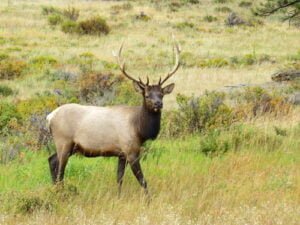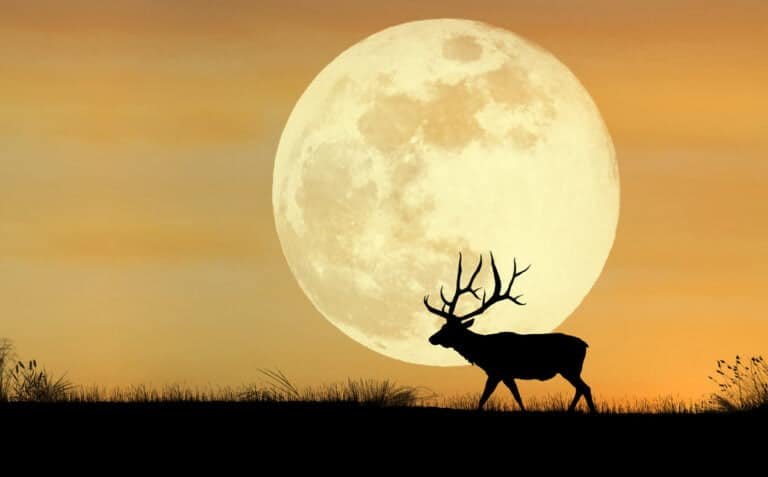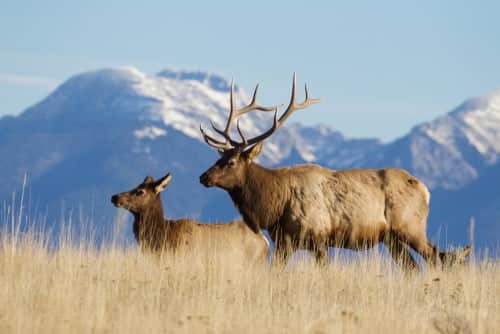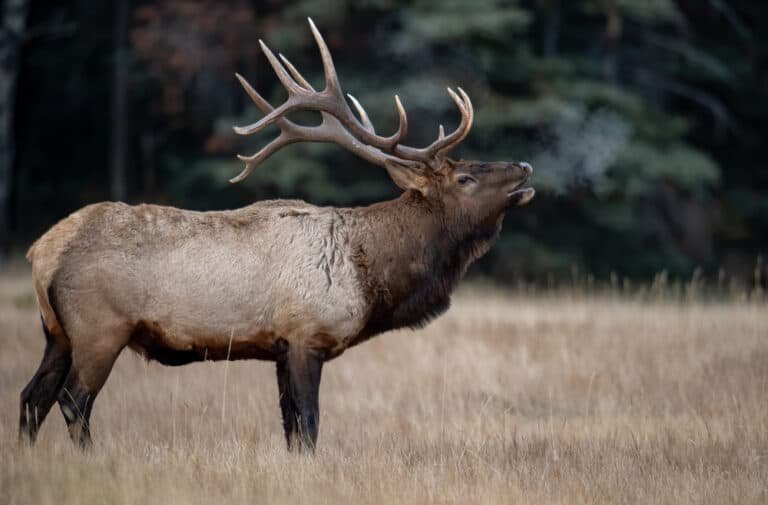Elk Hunting Montana – An Epic Hunt in Big Sky Country
Elk hunting in Montana is a pursuit that captures the hearts of outdoor enthusiasts and seasoned hunters alike. With its vast wilderness, rugged landscapes, and abundant elk populations, Montana offers an unparalleled experience for those seeking the thrill of the hunt. Whether you are an experienced hunter or a novice looking to embark on your first elk hunting adventure, understanding the intricacies of elk hunting in this picturesque state is paramount to achieving a successful and fulfilling experience.
Brief Overview of Elk Hunting Montana
Montana boasts one of North America’s largest populations of elk, making it a dream destination for hunters seeking to challenge their skills against these majestic creatures. The state’s diverse terrain ranges from thick forests to open grasslands, providing ideal habitats for elk herds throughout the year. Montana is home to two primary subspecies of elk: Rocky Mountain and Roosevelt elk.
The Rocky Mountain elk inhabits most regions throughout Montana. Recognized by their large antlers and reddish-brown coats with darker manes during rutting season, these magnificent animals are known for their elusive nature and remarkable adaptability.
On the other hand, Roosevelt elk can be found primarily in western Montana’s coastal areas. These larger-bodied elk possess dark brown or black coats and are renowned for their massive antler size.
Elk Hunting Montana – Intricacies for Success
Elk hunting is not simply about pursuing an animal; it requires a deep understanding of various factors influencing successful outcomes. Knowing how to navigate the terrain efficiently, deciphering elk behavior patterns, honing marksmanship skills, and employing effective strategies maximize your chances of harvesting an elk trophy. Understanding the intricacies of elk hunting is crucial for a successful experience, as it allows hunters to make informed decisions based on the specific conditions they encounter.
Factors such as weather, migration patterns, feeding habits, and mating rituals play pivotal roles in determining the presence and behavior of elk herds. By comprehending these nuances, hunters can adapt their approaches accordingly, significantly enhancing their chances of encountering and successfully harvesting an elk.
Moreover, knowledge of hunting regulations, licensing requirements, and ethical considerations is essential in preserving Montana’s rich hunting heritage. As responsible hunters, we must respect the land we traverse and ensure the sustainability of wildlife populations for future generations.
Elk Hunting Montana – The Basics
Factors that Make Montana an Ideal Destination for Elk Hunting
With its vast and diverse landscapes, Montana earns its reputation as an unparalleled destination for elk hunting. Situated in the heart of the Rocky Mountains, this state offers a combination of rugged terrain, dense forests, and open meadows that provide an ideal habitat for elk herds. The varied topography encompasses mountains, valleys, and river systems, ensuring plentiful food sources for these majestic creatures throughout the year.
Additionally, Montana’s continental climate, with cold winters and warm summers, contributes to the growth of abundant vegetation that sustains healthy elk populations. Such favorable ecological conditions make Montana a haven for hunters seeking unforgettable experiences amidst breathtaking natural beauty.
Elk Species Found in Montana: Rocky Mountain and Roosevelt Elk


Montana boasts two primary species of elk—the Rocky Mountain elk and the Roosevelt elk. The Rocky Mountain elk is the state’s most prevalent species, known for its imposing size and impressive antler development. These majestic animals typically inhabit higher elevations where they find ample grazing opportunities on lush alpine meadows during spring and summer.
On the other hand, Roosevelt elk are found primarily in western Montana’s dense forests, where they thrive among coniferous trees. Named after President Theodore Roosevelt due to his efforts to preserve wildlife habitats, this subspecies boasts massive bodies adapted to survive harsh climates and tough terrains.
Hunting Seasons, Regulations, and Licensing Requirements in the State
Hunting seasons in Montana are carefully regulated to ensure sustainable management practices while providing opportunities for hunters to pursue their passion ethically. Typically, archery-only seasons begin around September, followed by general rifle seasons that extend from October through November. Some districts offer extended seasons for cow elk hunts, providing additional opportunities to harvest antlerless elk.
Hunters must familiarize themselves with specific hunting district regulations and season dates, which may vary across the state. To partake in elk hunting in Montana, hunters must obtain the necessary licenses and permits.
Non-resident hunters must apply for a limited-entry license through a lottery system. Residents, however, can purchase over-the-counter licenses based on the specific hunting district or region they wish to explore.
It is important to note that all hunters must complete a hunter education course before obtaining their licenses unless they meet certain exemptions based on age or prior experience. Montana’s geographic advantages, such as diverse landscapes, favorable climate conditions, and abundant food sources, make it an idyllic setting for elk hunting adventures.
The presence of diverse elk species like the Rocky Mountain and Roosevelt elk further adds to the allure of pursuing these majestic animals in this remarkable state. By adhering to regulated hunting seasons and obtaining the appropriate licenses, residents and non-residents can embark on memorable journeys while contributing to conservation efforts to preserve Montana’s rich wildlife heritage.
Preparing for Elk Hunting Montana
Finding Prime Hunting Areas
One of the first steps for elk hunting in Montana is researching prime hunting areas. The state is renowned for its vast wilderness and abundant elk population, but not all areas offer equal opportunities. By delving into online resources, speaking with local hunters, and studying topographical maps, you can identify key regions where elk are known to congregate.
Consider factors like elevation, vegetation types, water sources, and historical data on successful hunts. Additionally, consider joining online hunting forums or contacting local wildlife authorities who may provide valuable insights into specific hotspots.
Navigating the Vast Wilderness
Once you have identified potential hunting areas in Montana’s vast wilderness, it becomes essential to acquire appropriate navigation tools. While traditional maps are helpful for general orientation, utilizing GPS devices has become increasingly popular among hunters due to their accuracy and advanced features.
GPS units designed for outdoor activities often include topographic maps preloaded with detailed terrain information that can aid in identifying trails and landmarks. Familiarize yourself with paper maps and GPS systems before heading out on your hunt to ensure a reliable backup plan in case of technological malfunctions or limited battery life.
Understanding Elk Behavior
Understanding elk behavior is crucial to increasing your chances of a successful hunt in Montana. These majestic creatures follow distinct feeding patterns influenced by seasonality and availability of food sources such as grasses, shrubs, or even lichen during winter. By familiarizing yourself with their preferred food choices at different times of the year—a task that can be accomplished through literature or speaking with seasoned hunters—you’ll be better equipped to locate them within their natural habitats.
Furthermore, knowledge about elk mating rituals can prove advantageous when bulls engage in intense battles for dominance and mating rights during the rutting season. Understanding the sounds and body language they use to communicate and establish hierarchy will aid in setting up strategic positions or utilizing calling techniques effectively.
Delving into elk migration routes will give you insights into their movements across different terrains, elevations, and habitats throughout the year. By understanding their preferred pathways between feeding areas, bedding grounds, and water sources, you can position yourself in advantageous spots along these routes to increase your chances of encountering elk during your hunt.
Selecting Appropriate Gear
Selecting suitable gear is critical to preparing for an elk hunt in Montana. Your choice of firearms or archery equipment can significantly impact your effectiveness as a hunter. Rifles chambered with calibers suitable for large games such as elk are recommended; .270 Winchester, .30-06 Springfield, or .300 Winchester Magnum are popular due to their power and versatility.
Similarly, consider compound bows with sufficient draw weights to deliver arrows with adequate kinetic energy if opting for archery hunting. In addition to weapons, proper clothing layers tailored for Montana’s ever-changing weather conditions are essential.
The state’s mountainous regions experience rapid temperature fluctuations throughout the day; thus, they dress in moisture-wicking base layers followed by insulating mid-layers and outer shells capable of providing warmth and protection against wind or rain. Don’t forget about sturdy boots that provide ankle support while allowing you to navigate various terrains comfortably.
Packing appropriate camping gear is crucial if planning multi-day hunts deep in Montana’s wilderness. Choose lightweight tents capable of withstanding unpredictable weather conditions while providing sufficient insulation and protection from elements like rain or snowfall.
High-quality sleeping bags designed for cold temperatures are also recommended to ensure a restful night’s sleep after an exhilarating day on the hunt. Remember that selecting the right gear enhances your overall hunting experience and is vital to your safety and success in the field.
Techniques and Strategies for Elk Hunting Montana
Spot-and-Stalk Method: Locating and Approaching Elk Herds Stealthily
Regarding elk hunting, the spot-and-stalk method is a classic technique that demands patience, observation, and careful footwork. To begin, finding vantage points that overlook expansive terrain will prove invaluable. This allows hunters to scan vast areas for signs of elk herds, such as feeding grounds or bedding areas.
Once a herd is spotted, the hunter must exercise stealth while approaching on foot. Utilizing natural cover like trees, boulders, or hillsides can provide concealment during the approach.
It’s also crucial to remain aware of wind direction since elk have a keen sense of smell. By effectively utilizing this technique, hunters can close the gap between themselves and elk herds.
Calling Techniques: Attracting Bulls and Locating Cow Herds
Calling plays a vital role in successful elk hunting by mimicking vocalizations that attract bulls during rutting season or locating cow herds for more strategic positioning. Bugle calls and cow calls are two primary calls used in elk hunting. Bugling can effectively lure bulls into range by imitating their distinctive mating call.
Skilled hunters use diaphragm calls or external bugle tubes to create realistic sounds that resonate through the wilderness. Learning different variations of bugles, such as challenge bugles or location bugles, increases the chances of drawing in curious bulls looking for potential rivals or mates.
Furthermore, cow calls are valuable tools for locating cow herds during rutting season when bulls actively seek out receptive cows. By replicating cow mews or estrus screams using diaphragm calls or external cow callers, hunters can grab the attention of nearby elks and potentially draw them within shooting range.
Stand Hunting: Ambushing Elk near Water Sources and Feeding Areas
Stand hunting involves setting up strategic ambush sites near water sources or feeding areas elk frequently visit. This technique takes advantage of elk’s reliance on specific locations for survival. They identify watering holes, wallows, or feeding grounds for accurate stand placement.
Hunters should scout these areas ahead of time to understand the patterns and habits of the elk herds in the region. Once an advantageous location is determined, creating natural blinds or utilizing existing vegetation can help hunters blend seamlessly into their surroundings.
Patience is key when employing this tactic, as hunters may spend hours waiting for elk to approach. However, the reward can be great when elks come within range for a well-placed shot.
Tactics for Tracking Wounded Animals
Even with careful aim and precision shots, tracking wounded animals after a successful hit remains essential in ethical hunting practices. When an elk has been struck but not immediately incapacitated, it often retreats into thick cover or challenging terrain.
To track wounded animals effectively, hunters must first mark the spot where the animal was struck by noting landmarks or using GPS devices. Blood trailing becomes paramount in locating injured game animals.
Following a blood trail requires meticulous attention to detail as hunters observe various indicators such as blood coloration, consistency, and quantity expelled from the animal’s wound. In addition to blood trails, signs such as broken vegetation or disturbed soil can guide hunters toward a successful recovery.
However, tracking wounded animals can be physically demanding and mentally challenging since elks are resilient creatures capable of traveling long distances, even with severe injuries. Hunters must remain patient, persistent, and compassionate during this hunting phase while minimizing unnecessary suffering by swiftly recovering downed game whenever possible.
Hunting Safety and Ethics – Elk Hunting Montana
Ensuring Safety in the Wilderness
When engaging in elk hunting in Montana, ensuring safety should be paramount. Handling firearms responsibly is crucial for the well-being of both hunters and fellow outdoor enthusiasts.
Maintaining proper firearm discipline, such as always pointing your muzzle in a safe direction and keeping your finger off the trigger until ready to shoot, can prevent accidents that may have life-altering consequences. Additionally, it is essential to familiarize oneself with local regulations and acquire the necessary permits to ensure compliance with state laws.
Navigating treacherous terrains is another aspect that demands careful attention. Montana’s rugged landscapes can present various hazards, including steep slopes, rocky cliffs, and dense forests.
To mitigate the risks associated with such conditions, hunters must equip themselves with appropriate gear, like sturdy boots with reliable traction and walking poles for stability. It is also advisable to inform someone about your hunting plans and establish regular check-in procedures to ensure help can be called upon.
Respecting Wildlife Habitats
Elk hunting in Montana goes hand in hand with a deep respect for nature and wildlife habitats. As responsible hunters, we must minimize our impact on ecosystems while pursuing our passion for the hunt. This entails avoiding unnecessary destruction or disturbance of sensitive areas by adhering to designated trails or paths whenever possible.
By doing so, we help maintain the balance within these habitats and safeguard them for future generations of humans and animals. Furthermore, practicing Leave No Trace principles becomes imperative when engaging in elk hunting activities.
This means cleaning up after ourselves by properly disposing of waste materials like food packaging or empty cartridges. Respecting wildlife habitats also involves refraining from disrupting natural processes or interfering with animal behaviors unless it is essential for ethical hunting purposes.
Ethical Considerations
Ethics form the backbone of responsible hunting practices for Montana elk hunting. It is crucial to approach hunting with a deep respect for the animals we pursue. Swift, humane kills should always be the aim when taking a shot, with hunters seeking to minimize any unnecessary suffering inflicted on their prey.
This calls for regular practice and honing of shooting skills to ensure accurate and effective shots. Furthermore, ethical considerations extend beyond the moment of the hunt itself.
It involves properly utilizing harvested game by ensuring that as much meat as possible is utilized rather than wasted. Additionally, ethical hunters understand the importance of fair chase principles, refraining from using illegal or unethical methods that give them an unfair advantage over their quarry.

Conclusion – Elk Hunting Montana
Elk hunting in Montana provides an exhilarating outdoor experience and an opportunity to learn about wildlife conservation and practice responsible behavior in pristine natural settings. By adhering to safety guidelines while handling firearms and navigating treacherous terrains, hunters can ensure their well-being and those around them. Respecting wildlife habitats by minimizing our impact on ecosystems allows us to preserve these fragile environments for future generations.
Ultimately, embracing ethical considerations throughout every aspect of elk hunting enables us to maintain a harmonious balance between pursuing this thrilling activity and our responsibility as stewards of nature’s gifts. Happy hunting!






